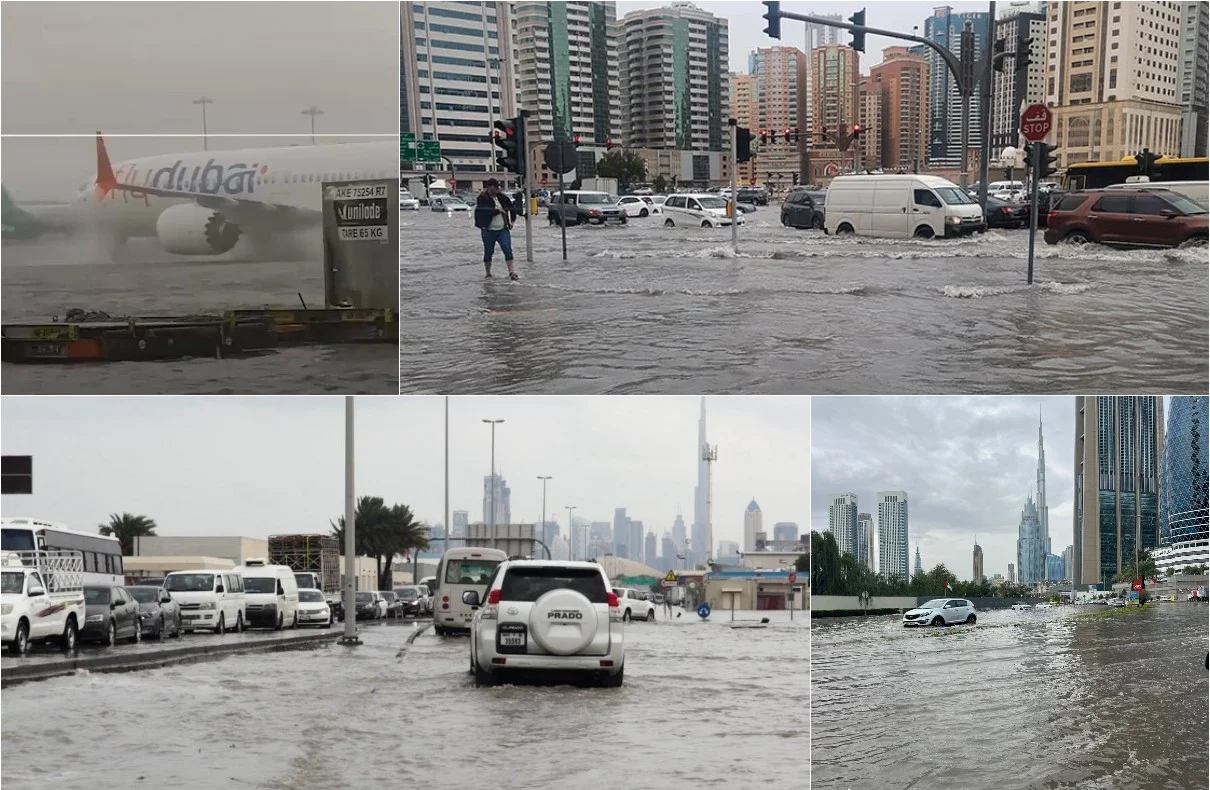On a fateful day in April 2024, the United Arab Emirates (UAE) faced an extraordinary climatic event — torrential rains of unprecedented intensity, which brought the bustling city of Dubai to a standstill. This unexpected weather phenomenon caused significant flooding, impacting major highways and Dubai’s international airport.
The sudden deluge was described by the state-run WAM news agency as a “historic weather event,” surpassing anything documented since meteorological data collection began in the UAE in 1949. The rainfall was so intense that it exceeded the average annual rainfall in just a few hours, causing chaos across the city.
According to meteorological data collected at Dubai International Airport, the city was drenched with approximately 0.79 inches of rainfall when the downpour began on a late Monday. However, the storms intensified the following Tuesday, inundating the city with more rain and hail.
The cumulative rainfall recorded in Dubai within a span of 24 hours was a staggering 5.59 inches. For perspective, the average annual rainfall at Dubai International Airport, the world’s busiest hub for international travel, is only 3.73 inches.
The torrential rainfall had a notable impact on the operations at Dubai’s International Airport. Standing water filled the taxiways, causing disruptions to both arrivals and departures. The condition was so severe that the airport had to halt arrivals on Tuesday night, leaving passengers struggling to navigate the floodwater-laden roads to reach the terminals.
The chaotic situation at the airport was described as “absolute carnage” by a couple who requested anonymity. They reported people sleeping in the Metro station and the airport due to the inaccessible transportation services.
The flooding was not confined to the airport. Major roads were submerged under water, vehicles were abandoned, and homes were inundated. Emergency personnel and police were seen patrolling the flooded streets, assisting residents and travelers alike.
Dubai International Airport announced that recovery from the flooding would require time, while acknowledging the limited transportation options and flight disruptions caused by the weather event. The city’s driverless Metro also faced disruptions due to the flooding of several stations.
The storm led to the closure of schools across the UAE, and many government employees were asked to work remotely. Some residents who ventured out found themselves stranded due to the deeper-than-expected water on the roads.
In response to the flooding, authorities dispatched tanker trucks to the streets and highways to pump out the water. Despite these efforts, many residents found themselves bailing out water from their homes.
While the country’s rulers did not provide an overall damage or injury report, it was reported that one 70-year-old man in Ras al-Khaimah, the country’s northernmost emirate, lost his life when his vehicle was swept away by floodwater.
The deluge was not limited to Dubai. Fujairah, an emirate on the UAE’s eastern coast, received the heaviest rainfall, with 5.7 inches of rain falling there. Rain also fell in Bahrain, Qatar, and Saudi Arabia, causing varying levels of disruption.
